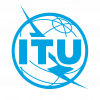BLOG
Telecom26 blog
eSIMs and M2M – the transition is inevitable. It’s just a matter of time

We’ve also looked at eSIMs - The market opportunity and using Telecom26’s eSIMs on our global roaming service;
According to the GSMA Intelligence report “eSIM: State of the consumer market and the road ahead by 2025”, 2.4 billion smartphone connections will use eSIMs globally.
Juniper Research’s figures are even more positive with the company estimating that the number of eSIMs installed in connected devices will rise from 1.2bn in 2021, to 3.4bn in 2025, a 180% increase.
Market analysts, Coherent Market Insights, write that “the global eSIM market was valued at US$ 8.3bn in 2019 and is expected to surpass US$19.3bn by 2027.
Apple has also removed the physical slot in the iPhone 14 in the US, so no eSIM = no service.
Meanwhile shipments of physical SIM cards are falling… ABI Research predicts that physical SIM shipments will fall to 3.93 billion in 2022 from 5.8 billion in 2020. However, almost 4 billion is still a huge number – and one that requires considerable effort, as well as incurring costs for every stakeholder in the ecosystem.
The market for eSIMs
Coherent Market Insights, writes that:
“Growing demand for smart solutions such as smart cities, smart meters, and electric vehicles is expected to drive market growth during the forecast period. This is attributed to connectivity and flexibility offered by IoT infrastructure and enhanced demand for smart cities and infrastructure growth in developing economies
The team of experts at Telecom26 expect demand for our eSIM service to come from a variety of sectors:
- M2M - In our most recent paper we’ve looked at “The eSIM transition for M2M - How can you benefit and how do you get there?”
- organisations with employees who frequently travel overseas - our global roaming service provides seamless connectivity across 1100 cellular networks from over 620 mobile operators in more than 220 countries with no bill shock at the end of a trip.
- eHealth - we will start to see physical SIMs be replaced by eSIMs in a variety of IoT networks used by digital health programmes such as SystemOne, Telecom26’s customer across Africa.
- Shipping, freight and logistics sectors including cargo companies which will use eSIMs to track vehicle movements and maintenance as well as the condition of goods.
- The consumer market - where there are also lucrative eSIM opportunities for MNOs - and also attractive propositions for frequent travellers - which revolve around mobile roaming activities. Using eSIM data plans, subscribers will only have to buy a data plan to cover the country they are travelling to using a pay-as-you-go model with no upfront subscriptions.
The advantages of eSIMs
An eSIM is a software-based replacement of a physical SIM that can be embedded into mobile devices before they leave the factory – with remote, over-the-air programming options to configure them with the required customer settings. With eSIM, there is no need to physically send a SIM card to a customer; it’s natively on the device, so simply needs to be programmed when its activated.
This has significant benefits – for SIM users, who don’t need to worry about inserting physical cards into devices, as well as to the suppliers and mobile connectivity providers.
eSIM is the clear choice for M2M and IoT Connectivity
In our most recent paper “The eSIM transition for M2M - How can you benefit and how do you get there?”, we discuss how any organisation that delivers sensors or equipment that requires connectivity to wireless cellular networks must now consider integrating eSIMs into its mobile fleet.
For manufacturers that ship such devices in volume, there’s no viable alternative to this transition. For users of these devices and for the providers of services which they enable, the rationale is equally compelling – the final step in the value chain is the connectivity provider – those able to configure and activate the remote profiles which unlock access to mobile networks.
One of the issues with shipping devices to the point at which they are desired to operate – the local site – is that they must be equipped with a SIM to enable connectivity. For users that purchase such devices and then transport them to the remote site in which they will be deployed, this has, for many years, required the manual insertion of a SIM card. Such cards could be purchased from local connectivity providers or procured from a single connectivity provider who can offer access to any of the networks to which such devices might be connected.
With eSIM, the functional capabilities for network connectivity are natively included in the device. There is no need to manage the delivery of SIMs to any of your facilities, or to handle the insertion of these into the devices prior to activation. eSIM is a game changer for managing the logistics behind the delivery and activation of the devices that are essential for the services and applications you seek to run.
eSIM radically simplifies configuration, dispatch, and delivery for your device fleet. When they reach their destinations, all you need to do is switch them on and they will find a network. This cuts costs, dramatically – and makes life a great deal easier for your staff, who can spend time on other challenges, ensuring that your operations are enhanced.
eSIM has already reached many consumer devices, which means that operators of corporate device fleets can already consider switching to eSIM for their global connectivity. It’s taken a little longer to penetrate the OEM community, but it’s definitely coming. That’s because eSIM capabilities will gradually spread through the chip ecosystem, with compatible chips being programmed at manufacture, as well as software-only provisioning at different points in the supply chain before devices reach the market.
As a result, many IoT devices will be built with eSIM natively embedded, as well as the necessary bootstrap profiles that enable their profiles to be remotely managed by the chosen service provider. In time, this will likely become the default for such devices, as the economies of scale will ensure eSIM spreads through the device manufacturing ecosystem. So, there’s no doubt that the devices and sensors you use will become eSIM-enabled in the next few years, if they are not already.
Telecom26 - providing a complete range of eSIM solutions for M2M and consumers
As a global mobile connectivity service provider, Telecom26 is strongly committed to driving the transition to eSIM. It will lower operational costs, reduce friction and enhance choice for M2M / IoT, consumer and business customers. As a result, we offer a complete range of solutions, enabling the remote provisioning of eSIM-capable devices from our GSMA-certified and compliant platforms.
This includes the full range – eUICC (the ‘e’ version of the Universal Integrated Chip Card that’s at the heart of the eSIM solution), as well as bootstrap and operational profiles, and the profile enabling and management infrastructure in the form of SMDP and SMSR capabilities. The result is an easy, fast means of provisioning eSIMs, in any compatible device, backed by complete subscription management for our customers.
All of our current and future capabilities and features are seamlessly supported through our eSIM solution – and they will work on all of our partner networks – the number of which continues to grow as we invest in our global footprint. In addition, customised solutions for specific use cases can also be offered, in consultation with our team.
We cover 5G (where available), 4G, 3G and 2G – all generations of technology to ensure smooth connectivity and to present the widest range of options. With eSIM, the process of device activation is eased, enabling fully remote configuration and operations to support flexible growth for any M2M and IoT use case.
For more information about how Telecom26’s eSIMS can help your business please contact us: https://www.telecom26.ch/about/contact-sales



